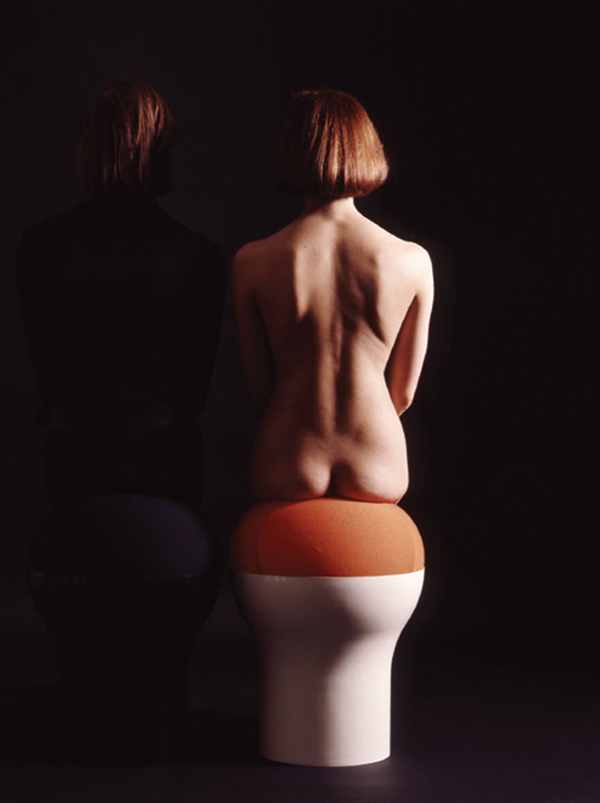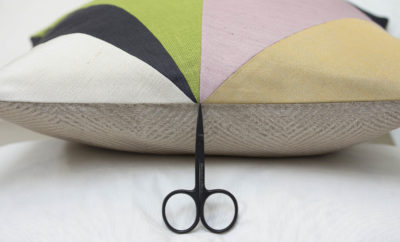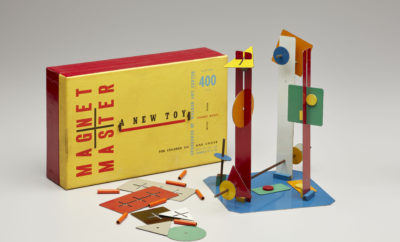 LES ARTS DÉCORATIF, PARIS/A.D.A.G.P. 2016
LES ARTS DÉCORATIF, PARIS/A.D.A.G.P. 2016
Exhibition
Roger Tallon: A Lifetime of Design
OVER A SIXTY-YEAR CAREER, the French designer Roger Tallon created industrial objects ranging from machine tools to high-speed trains, and domestic furnishings from tableware to televisions. In 2008, three years before his death, he gave his entire archive to the Musée des Arts Décoratifs in Paris. That donation forms the backbone of the retrospective Roger Tallon, Design in Motion opening at the museum on September 8 (to January 8, 2017). Tallon “left about eighty big boxes and several models and various objects,” says design historian Françoise Jollant, a longtime friend of the designer, who put together the show with Dominique Forrest, chief curator of the museum’s modern and contemporary department. After he died, “it took us two years to sort out the archive and another two years to prepare the exhibition.”
Organized chronologically and thematically, the show is a comprehensive survey of Tallon’s contribution to everyday French life in the second half of the twentieth century, including cult collectibles such as the 1963 Téléavia P111 portable television, the 1973 Lip Mach 2000 watch, the 1964 M400 adjustable spiral staircase, and the 1969 Cryptogramme stool. It celebrates, too, his role in modernizing the French railroads to compete with air and road transport, including the renovation of the Paris metro and the interior of the first Eurostar Paris-London trains. More fundamentally, the show establishes Tallon’s seminal role in bringing American-style industrial design to postwar Europe. Born in 1929, he trained as an engineer before doing compulsory military service in occupied West Germany, where he first came in contact with American industry. On his return to Paris he started working as a consultant for E. I. Dupont de Nemours and Caterpillar, firms with a holistic approach to design. In contrast, Jollant says, “In the 1950s in France nobody even talked about industrial design.”
Working with the Americans brought Tallon into contact with his countryman Jacques Viénot, a pioneer in the fusion of decorative arts and industrial technology, and a fellow admirer of American industry. Tallon joined Viénot’s Technès (technology and esthetics) design firm in 1953 and stayed for twenty years, before leaving to found Design Programmes in 1973. At Technès he developed a concept of global design, encompassing everything from product to corporate logo, ergonomics to color coordination, operating manual to packaging. “In the early 1950s he did machine tools,” Jollant says. “Not very glamorous, but he became known for redesigning machine tools from the point of view of ergonomics, taking account of the man behind the machine for the first time.”
“Tallon was looking closely at the Bauhaus and the Ulm school,” she says, referring to the two leading German modernist design centers, “and some of his best friends were Italian. But most of all he had a great admiration for the Americans.” He also developed close links with the Nouveau Realiste group of avant-garde artists—notably César, Arman, Yves Klein, and their guru Pierre Restany, a proponent of “poetic recycling of urban, industrial, and advertising reality.” That led to collaborations with Klein and César, and appointment in 1970 as artistic director of the French pavilion at the world’s fair in Osaka, Japan.
Other cultural collaborations followed, not least his 1973 graphic design, still in use, for Catherine Millet’s cutting- edge contemporary art review Art Press. “In short,” Jollant says, Tallon’s success epitomizes the idea that when you talk about design it is very important to broaden the spectrum and include politics, economics and culture. You can’t explain the history of design without thinking about the context.”
Concurrently with the museum retrospective, Jousse Enterprise will show Tallon’s Module 400 furniture at its 18 rue de Seine gallery until October 8. lesartsdecoratifs.fr













